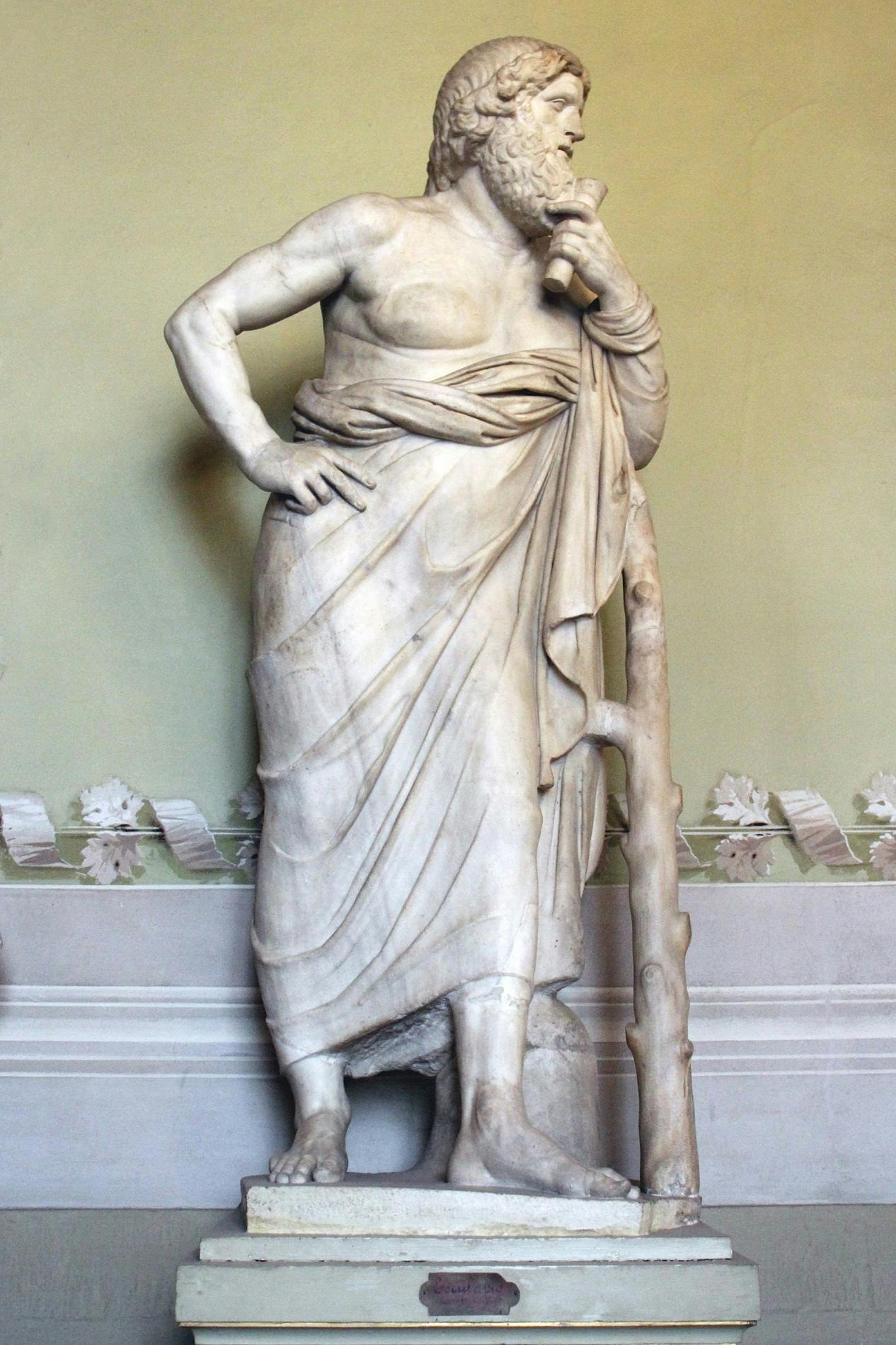Asclepius
Roman art
The modern additions (left arm, with the bottom part of the figure from the end of the robe) are the work of Francesco Franchi and Giovan Battista Foggini, who restored the work between 1711 and 1715, in order to place it in the third corridor of the Uffizi Galleries. In 1794, the work, which was immediately judged as being of low quality, was taken away from the Vasari complex to be placed in the Gallery of Palazzo Pitti, where it is seen today. Asclepius (Vejovis for the Romans), the god of health, is shown deep in thought, with his left arm under his chin, in a position often used by artists to depict philosophers and poets. The need to give the figure support elements led to the insertion of two parts: a walking stick, often present when depicting this god, and an omphalos, partly restored at the back; this is a sculpted stone that imitates the one placed in the temple of Apollo in Delphi, which is even more significant when considering that according to the myth, Asclepius is the son of Apollo. This statue is an excellent copy from the Antonine period, reproducing one of the masterpieces by sculptor Nikeratos, who worked between the late 3rd and early 2nd centuries B.C., and made the original for the Temple of Concord at the western end of the Forum in Rome, at the foot of the Capitoline Hill. It is not by chance that all of the known copies of this type of Asclepius come from Rome, confirming the great fame at local level that this finished example of Hellenistic art enjoyed since ancient times. Accounts by Pliny the Elder in his Naturalis historia, state that the figure of Asclepius was supposed to be placed in the temple alongside a statue of his daughter, Hygeia, the personification of health, copied according to iconography that would become very successful in the West: the goddess is depicted in the act of feeding a snake that is wound around her shoulders. The two images formed a couple of cult statues, the visual effect of which can be seen in an ivory diptych from the early 5th century CE.
V. Saladino in G. Capecchi, D. Heikamp, A. Fara, V. Saladino, Palazzo Pitti. La reggia rivelata, Catalogo della mostra (Firenze, Palazzo Pitti, 7 dicembre 2003-31 maggio 2004), Firenze 2003, p. 577, n. 125
